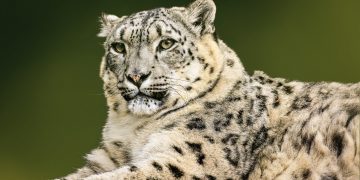The snow leopard population has reportedly increased by 40% in the Himalayan kingdom of Bhutan.
According to the Good News Network, snow leopards have been declining due to habitat loss and poaching, but the Bhutan’s commitment to environmental preservation has aided the big cat population.
The National Snow Leopard survey has found that 136 snow leopards are living in the area. This is up from the 96 that were counted in 2016.
Last survey was conducted in 2016 which gave figure of 96 snow leopards in Bhutan. Now the numbers are very encouraging.
— Parveen Kaswan, IFS (@ParveenKaswan) September 17, 2023
A snow leopard captured by camera trap in Bhutan. Courtesy; DoFPS, Bhutan. pic.twitter.com/hIabLrOHDv
Chimi Rinzin, country director for World Wildlife Fund-Bhutan, stated, “The increase in snow leopard numbers is yet another milestone achievement for Bhutan’s conservation journey.”
“It clearly demonstrates the government’s leadership and the conservation ethos of the highland communities,” he added.
Snow leopards were considered an Endangered species by the International Union for Conservation of Nature (IUCN) between 1986 and 2017, per Britannica.
But their status was updated in 2017 and relisted as “vulnerable” once an error was discovered in the population calculation process, being that they are such elusive creatures often called the “ghost of the mountains.”
The World Wildlife Fund (WWF) also notes that the snow leopard population ranges across 12 countries in Asia.
This estimated span of 772,204 square miles places 60% of their habitat in China, but a whopping 70% of their land range remains unexplored to this day.
The WWF asserts that “the snow leopard population is very likely declining,” but the Snow Leopard Trust has discovered bias in population studies.
Snow Leopard Trust ecologist Dr. Kulbhushansingh Suryawanshi stated, “At first glance, there are lots of reports and studies on snow leopard populations out there – but it turns out that many of them are based on interviews with local people, observations such as pug marks, or on expert opinion.”
“Those aren’t particularly useful methods to estimate snow leopard numbers,” he went on.
“They don’t allow you to draw any valid conclusions about how many individuals of the species there are,” he concluded.


























 Continue with Google
Continue with Google